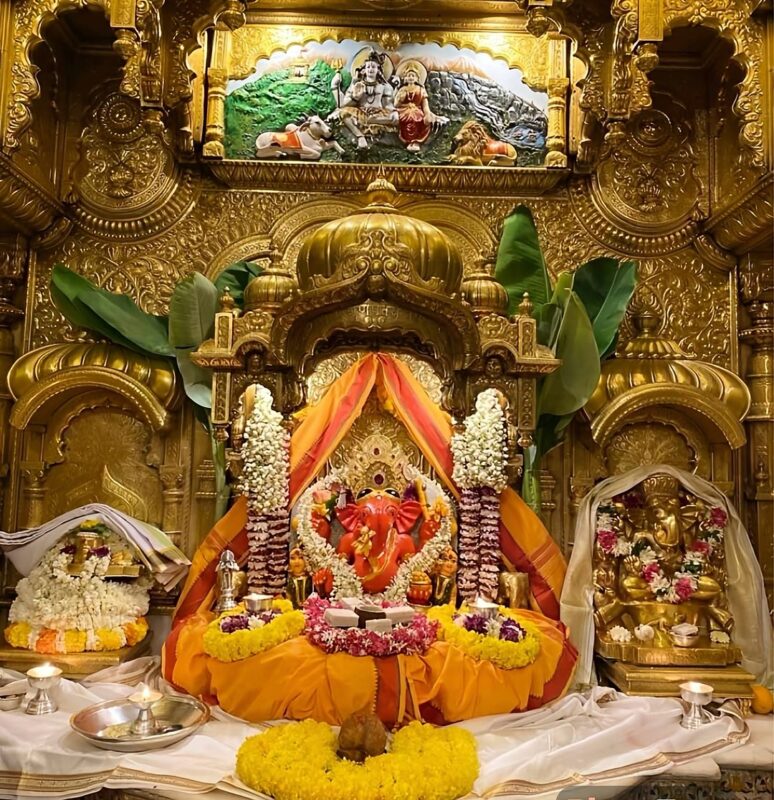वक्रतुण्ड महाकाय सूर्यकोटि समप्रभ।
निर्विघ्नं कुरु मे देव सर्वकार्येषु सर्वदा॥
In Hinduism, Lord Ganesha holds the esteemed position of being the foremost deity to be worshipped before commencing any ritual or auspicious task. Known by several endearing names such as Vinayak, Vighnaharta (the remover of obstacles), Gajanan (elephant-faced), and Ganapati (leader of the Ganas), Lord Ganesha’s presence is integral to Hindu worship. His revered status as ‘Pratham Pujya’ (first to be worshipped) is deeply embedded in Hindu traditions and rituals.
The inception of Ganesha’s worship dates back to antiquity, anchored in the spiritual and cultural fabric of Hinduism. The sacred scriptures mention that without invoking Ganesha at the start of a ceremony, the endeavor remains incomplete and is considered inauspicious. This practice underscores his role as a pivotal figure who clears all hurdles, ensuring the proceedings go smoothly without any divine interruptions.
Why is Lord Shri Ganesha worshipped first?
Mythology of Hinduism

Ganesha’s prominence is highlighted through various mythical stories that articulate his wisdom and the profound respect he commands among other deities. According to legend, a significant dispute among the gods concerning the precedence of worship led to an insightful resolution by Lord Shiva. He proposed a celestial race around the universe, declaring that the winner would henceforth be worshipped first. While other deities embarked on the quest, Ganesha circled his parents, Lord Shiva and Goddess Parvati, asserting that for him, his parents represented the entire universe. Impressed by his discernment and devotion, Shiva declared Ganesha the victor, thereby granting him the position of the first deity to be worshipped.
This narrative not only illustrates Ganesha’s cleverness but also his deep-seated values of respect and reverence towards his parents, aligning with the broader Hindu ethos that venerates the guru and the elders. His actions teach the importance of wisdom, honor, and the true essence of devotion.
Why is Shri Ganesha called Vighnharta?
Moreover, Lord Ganesha is worshipped as Vighnaharta, the demolisher of obstacles. He is believed to possess the power to remove any obstructions in the path of the spiritual and worldly pursuits of his devotees. This makes his invocation essential at the beginning of any endeavor, from religious ceremonies to educational pursuits, ensuring success and protection from all misfortunes.
Ganesha’s appeal extends beyond the religious sphere; his iconography, with the elephant head and a potbelly, symbolizes the material universe, which he governs and monitors. His imagery is omnipresent in Hindu art and culture, making him one of the most recognizable and loved deities.
In conclusion, the worship of Lord Ganesha at the beginning of every auspicious activity is more than a ritualistic tradition; it is a profound expression of seeking divine blessing for success and protection against the unknown. Through the worship of Ganesha, devotees pay homage to a deity who embodies wisdom, protection, and the promise of auspicious beginnings, thereby reinforcing the spiritual richness of Hindu worship practices.
विघ्नेश्वराय वरदाय सुरप्रियाय लम्बोदराय सकलाय जगद्धितायं।
नागाननाय श्रुतियज्ञविभूषिताय गौरीसुताय गणनाथ नमो नमस्ते॥
—————————–








